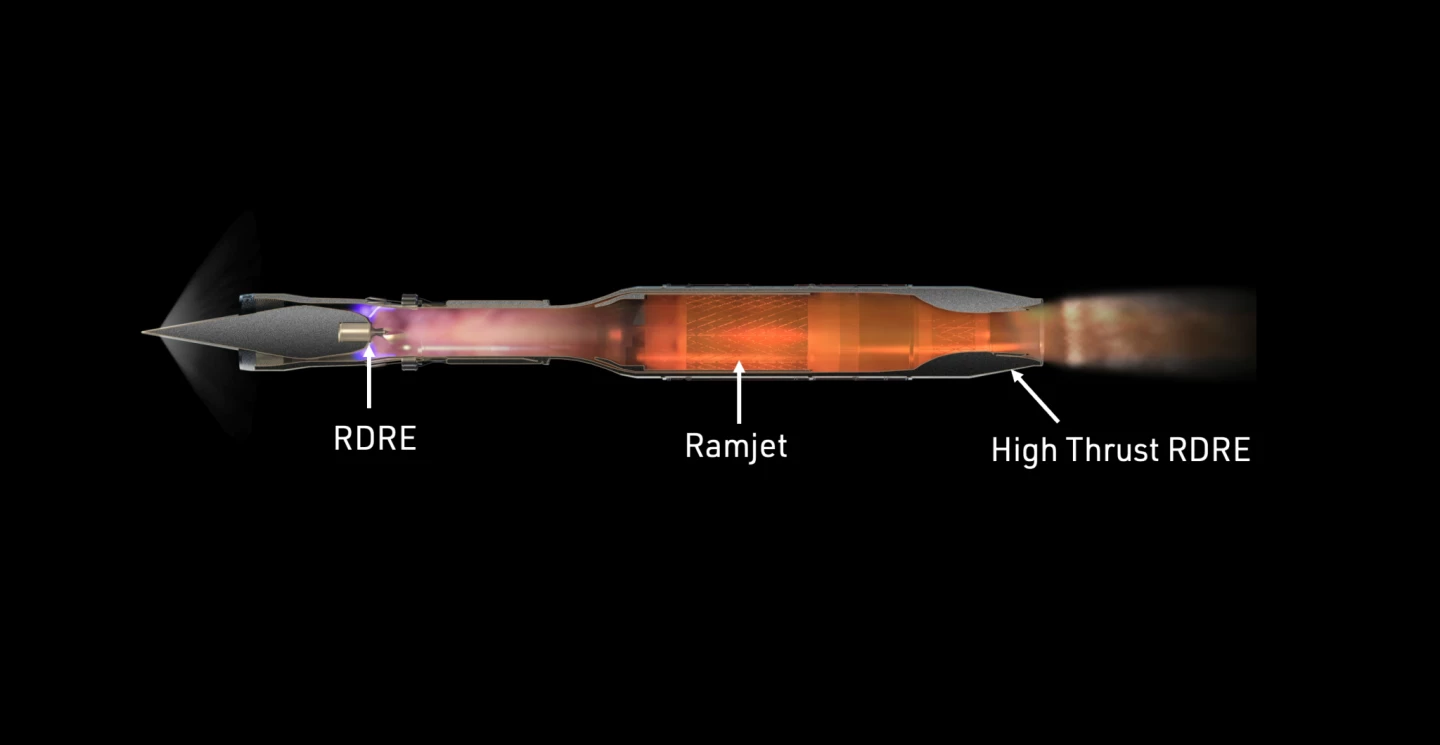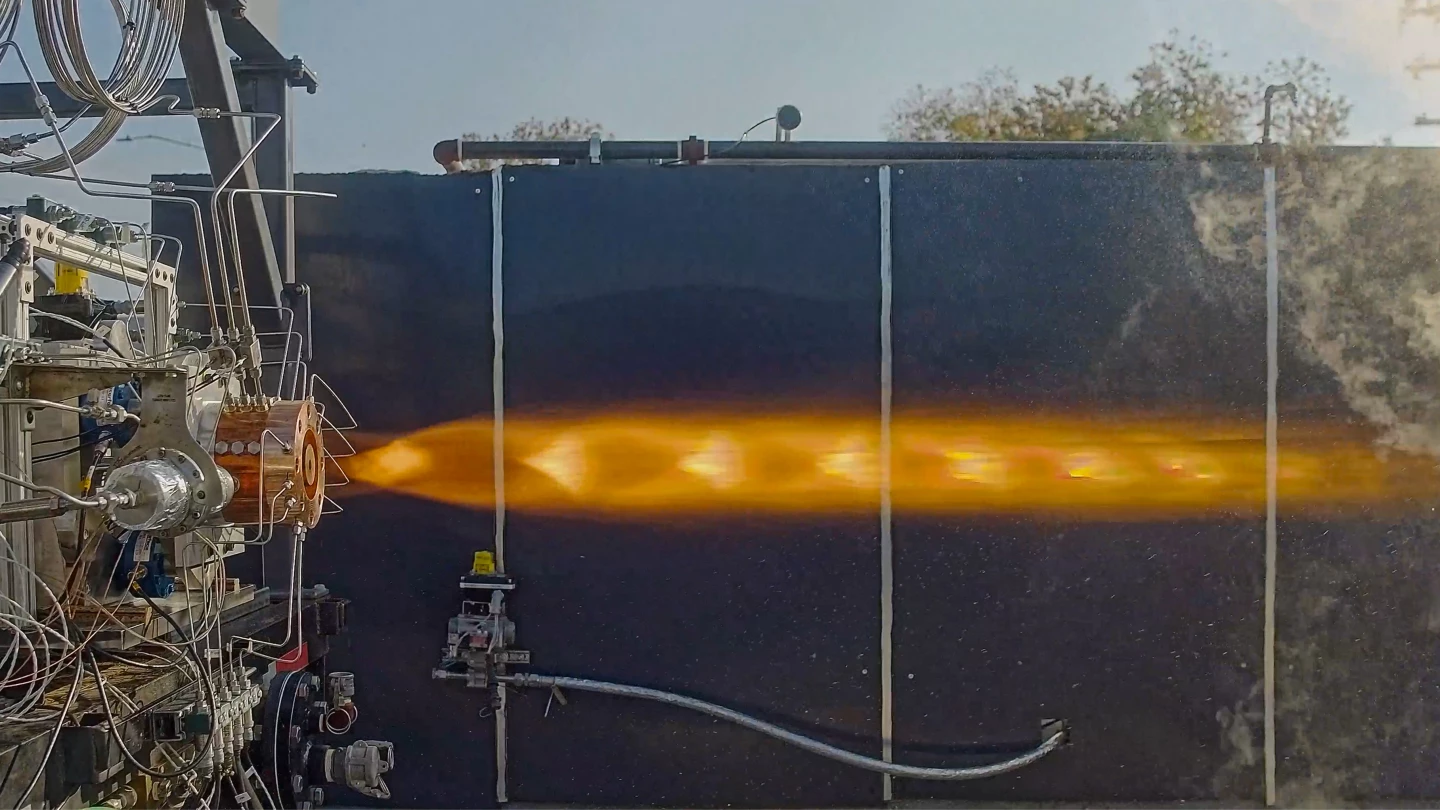In what may be a world first, Venus Aerospace has, for the first time in the US, successfully flown a Rotating Detonation Rocket Engine (RDRE) that uses supersonic explosions to create thrust. Such engines could help propel future hypersonic vehicles.
The May 14, 2025 Venus Aerospace test flight took place at Spaceport America next to the White Sand Missile Range in New Mexico and may be the world's first flight of an RDRE. It's hard to be definite because in 2021 and 2024 the Japan Aerospace Exploration Agency (JAXA) tested its own version of the engine, but these occurred on sounding rockets fired into space, while the US tests were in the atmosphere, where the RDRE played a key part in the takeoff and flight.
Let the hair splitting begin.
The latest RDRE test is part of the company's efforts to develop a hypersonic vehicle capable of flying at speeds of up to Mach 6 and a RDRE/ramjet engine capable of propelling it from a conventional takeoff, to cruising, to landing.
Key to this is the Venus Aerospace VDR2 air-breathing detonation ramjet engine that was unveiled last year.
The heart of it is a ramjet that propels test vehicles at hypersonic speeds. At first, it looks like an empty tube without any moving parts. That's because instead of using turbine blades to compress the incoming, it relies on the forward velocity of the craft to do the compressing. The tricky bit is controlling the air intake, with a conical inner body that adjusts the shock waves and slows down the airflow to subsonic speeds, otherwise the engine would burst or melt.

The ramjet does the job, but there is a fly in the aerodynamic ointment. The ramjet needs to be moving at high speeds in order for the compression wave to build up and start the engine cycle. That means it has to be accelerated by means of a booster rocket or dropping it from a high-speed aircraft, which is really inconvenient if you want a hypersonic vehicle that can take off like a conventional plane.
That's where the RDRE comes in. First posited in the 1980s, the RDRE is essentially a rocket engine that works by means of continuous, controlled explosions. The engine consists of an empty cylinder with an opening at one end. Into this chamber is introduced a propellant mix of fuel and oxidizer that is detonated to produce a supersonic shock wave that travels in a circle around the chamber, compressing and consuming the unburnt propellant.
The result is a high-velocity, high-pressure exhaust that creates thrust with high combustion efficiency and higher thrust-to-weight ratios compared to traditional rocket engines. The upshot is that a hybrid of RDRE and ramjet equals a hypersonic vehicle that can take off and land from a conventional runway.

However, the May 14 test was not of such a vehicle, instead, it was launched near-vertically like a rocket to simplify design and flight operations since the purpose was to demonstrate under real-world conditions the technology that will be used in later tests, including a drone incorporating the VDR2 later this year. According to the company, the ultimate goal is to use an advanced version of the engine to power the Stargazer M4, a Mach 4 reusable passenger aircraft.
"This is the moment we've been working toward for five years," said Sassie Duggleby, CEO and Co-founder of Venus Aerospace. "We've proven that this technology works – not just in simulations or the lab, but in the air. With this milestone, we're one step closer to making high-speed flight accessible, affordable, and sustainable."
Source: Venus Aerospace








